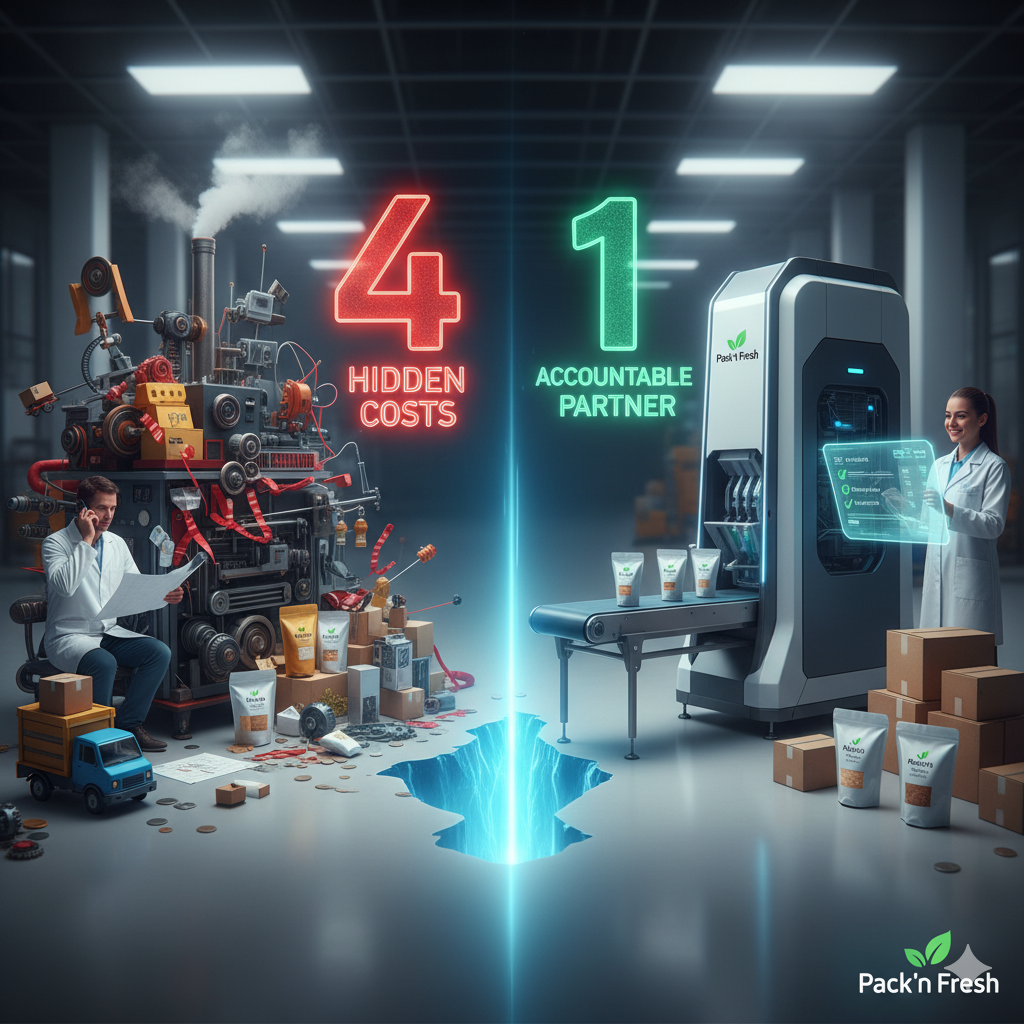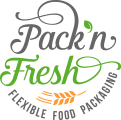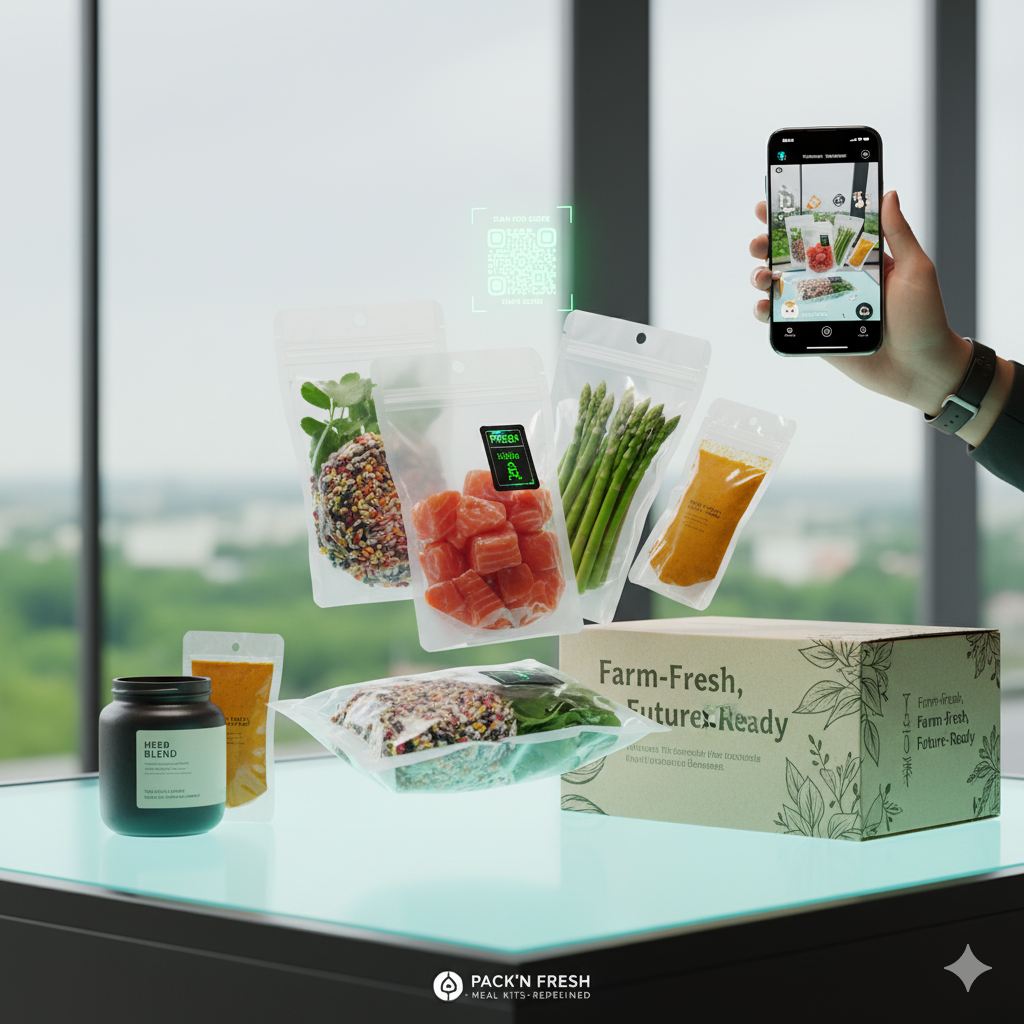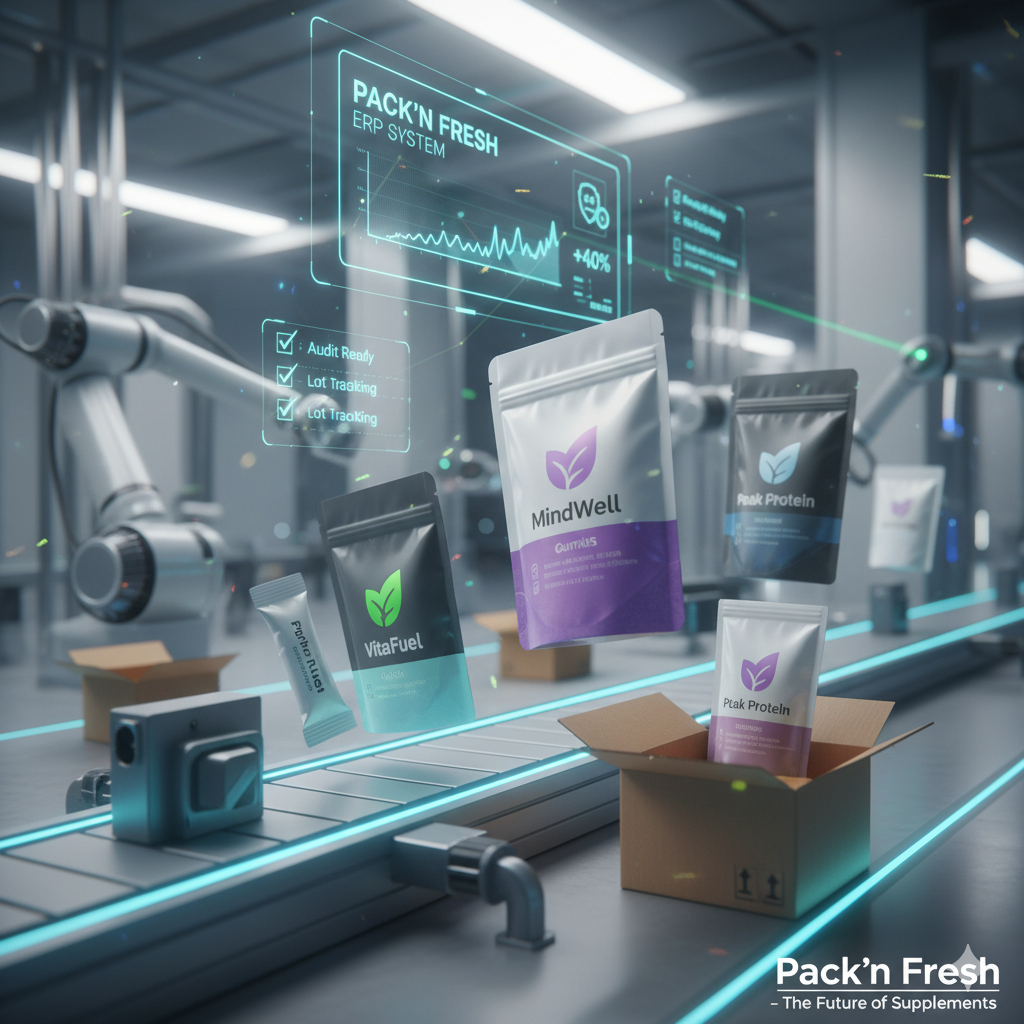
The True Cost of DIY Food Packaging: Why Brands Outgrow Multiple Vendors Fast
The Hidden Flaw in the DIY Food Packaging Model
When food brands first launch, a DIY food packaging strategy feels like the smart move. You find one supplier for raw ingredients, another for your packaging film, a third for blending, and maybe even a separate kitting provider. At first glance, this patchwork model looks flexible, lean, and cost-effective. But this is a dangerous illusion. As orders grow, the “flexible” model starts to unravel. Hidden costs creep in, complex logistics create bottlenecks, compliance becomes a nightmare, and suddenly the “savings” vanish, replaced by mounting expenses and stress.
Let’s break down the true cost of DIY food packaging, why that vendor management model almost always becomes more expensive in the long run, and why turnkey copacking is the smarter path for any food brand that wants to scale.
The Hidden Costs No One Tells You About
The sticker price from your individual suppliers is not the true cost. The real expenses are hidden in the gaps *between* your vendors.
1. Crippling Freight and Logistics Overload
Every transfer adds a new bill. Ingredients must be shipped to your blender. The blended product must be shipped to your packager. The finished pouches must be shipped to your warehouse or 3PL. Each leg of this journey brings freight bills, fuel surcharges, and handling fees. A startup moving just 10,000 pouches per month could easily spend an extra $5,000–$10,000 annually just shuffling its own product between facilities. This doesn’t even account for the increased risk of damage, loss, or spoilage with every additional handover.
2. The Time Drain of Constant Coordination
With a DIY vendor model, you are the full-time project manager. Your team’s valuable hours are spent chasing updates, coordinating timelines, and putting out fires. What happens when your packaging film is delayed by one week? Your blender, your packager, and your entire production schedule slip. That delay isn’t just frustrating—it could mean missing a seasonal launch window, letting a major retail PO fall through, or running out of stock on your website, killing your sales momentum.
3. Quality Assurance and Compliance Headaches
In a multi-vendor system, every new partner is another potential point of failure. You must audit each one, verify their certifications, and manage separate mountains of paperwork. Each supplier has different quality standards, and you are left trying to stitch together a unified compliance system with no central accountability. If there’s a quality issue, who is to blame? The ingredient supplier? The blender? The packager? This “finger-pointing” is a massive risk to your brand.
Risk Factors That Multiply with Every Vendor
Beyond the financial costs, a fragmented supply chain introduces serious risks that can damage or even destroy a growing brand.
Risk 1: Product Contamination
Food safety is paramount. Every time your product is unloaded, stored, and re-loaded at a new facility, the risk of cross-contamination, pest issues, or environmental exposure (like humidity) increases. More touchpoints equal a higher probability of a critical error.
Risk 2: Mislabeling and Portioning Errors
When your film supplier and your packager are two different companies, the room for error skyrockets. Poor communication often leads to inconsistencies. The wrong film might be used for the wrong product, allergen information could be incorrect, or portioning machines at one facility might not be calibrated to match the claims on the label from another, leading to an undeclared allergen risk.
Risk 3: Catastrophic Recall Unreadiness
This is the nightmare scenario. Imagine trying to trace one bad ingredient lot across four separate suppliers, all using different tracking systems. With no unified ERP, a recall investigation that should take minutes can take days. As FDA-mandated recalls become more common, those wasted days can mean irreparable reputational damage and legal liability. It’s a risk scaling brands cannot afford, which is why a copacker with an integrated ERP is so critical.
Why Turnkey Copacking Solves the Problem
A single-source, turnkey copacker like Pack’n Fresh eliminates these risks by managing the entire chain: sourcing, blending, portioning, packing, kitting, and shipping. This isn’t just a small improvement; it’s a fundamentally different, more secure model.
- You get one freight bill (for the finished product), not three or four.
- You have one QA team auditing the entire, end-to-end process.
- You have one ERP system tracking every ingredient and batch from arrival to shipment.
Instead of duct-taping a fragile supply chain, you get a streamlined system that saves significant money, protects your brand, and lets you focus on growth.
Checklist: Signs You’ve Outgrown DIY Food Packaging
If you’re experiencing any of the following, you’ve already crossed the threshold where DIY food packaging is costing you more than it’s saving.
- You are juggling more than 3 separate suppliers for one product.
- Your team spends more time chasing logistics updates than on marketing or sales.
- Freight charges between your own facilities are eating into your margins.
- You have experienced at least one compliance or labeling scare in the last year.
- You cannot confidently trace an ingredient lot in under 10 minutes.
Final Word
DIY vendor management works for the first few months of a brand’s life, but it has a low ceiling. It’s a model built for hobbies, not for businesses. If you want to scale, protect your margins, and sleep at night, you need one accountable, professional partner. Pack’n Fresh specializes in turnkey copacking—sourcing, blending, portioning, and packing all under one roof, backed by ERP for total traceability and compliance.


